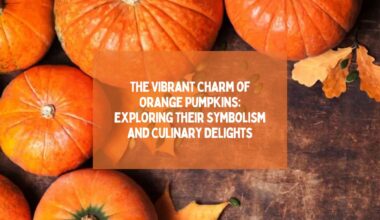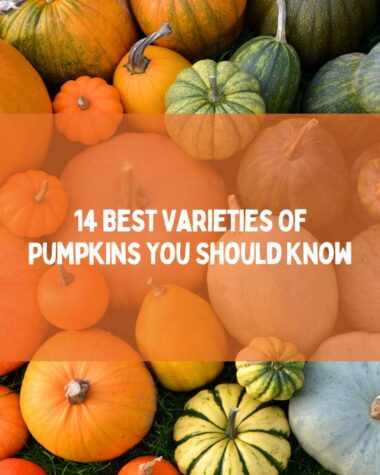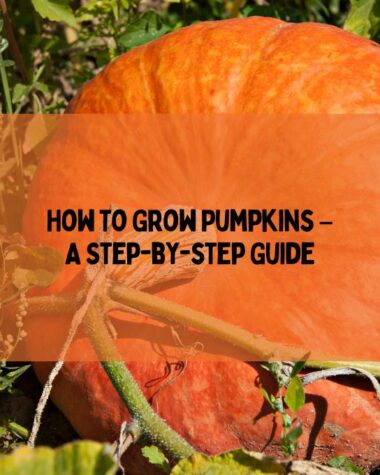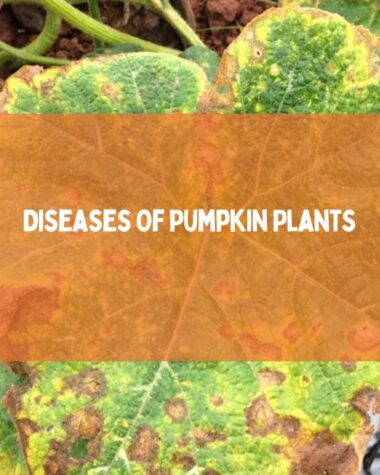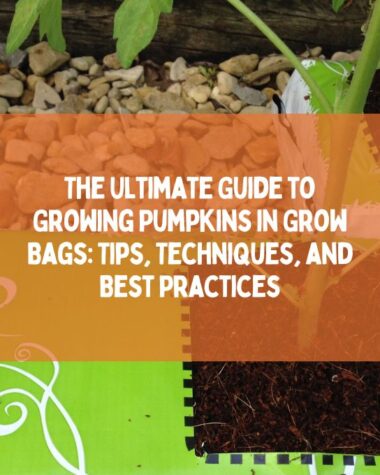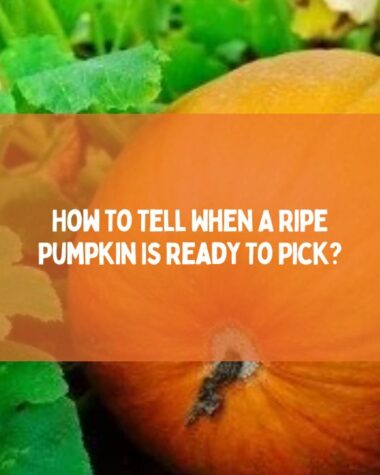When it comes to fall favorites, the peanut pumpkin takes center stage with its vibrant colors, unique shape, and delicious flavor. Also known as the Galeux d’Eysines pumpkin, this heirloom variety has gained popularity not only for its ornamental appeal but also for its culinary versatility and numerous health benefits.
In this comprehensive article, we will explore everything you need to know about the peanut pumpkin, from its origins and physical characteristics to its nutritional profile, culinary uses, and potential health advantages.
So, sit back, grab a warm cup of cider, and delve into the fascinating world of the peanut pumpkin!
Peanut Pumpkin: An Introduction
Origins of the Peanut Pumpkin
The peanut pumpkin, or Galeux d’Eysines, hails from the picturesque region of Eysines in France. This heirloom variety has been cultivated for centuries and is cherished for its exquisite beauty and unique texture.
The name “Galeux d’Eysines” roughly translates to “warts of Eysines,” referring to the distinct characteristic that sets this pumpkin apart from its counterparts.
Physical Characteristics
One glance at the peanut pumpkin is all it takes to fall in love with its striking appearance. The exterior showcases a warm, salmon-pink color with bumpy warts spread across its surface, resembling the texture of peanuts.
The flesh is a vibrant orange, offering a sweet and creamy taste that is both indulgent and satisfying. Typically, peanut pumpkins weigh between 10 and 20 pounds (4.5 and 9 kg), making them a substantial addition to any autumn harvest display.
Related Reading
- How to Harvest Pumpkin Seeds for Planting?
- The Vibrant Charm of Orange Pumpkins: Exploring Their Symbolism and Culinary Delights
- Unleashing Joy: Exploring the Delightful World of Jolly Pumpkins
- Unveiling the Flavorful Legacy: Exploring the World of Pumpkin Heirloom Seeds
Nutritional Profile of the Peanut Pumpkin
Vitamins and Minerals
The peanut pumpkin boasts an impressive nutritional profile, making it a valuable addition to a well-rounded diet. It is rich in essential vitamins and minerals and offers a variety of health benefits.
A single serving of peanut pumpkin (approximately 1 cup, diced) provides a significant amount of the following nutrients:
- Vitamin A: Peanut pumpkins are a fantastic source of vitamin A, providing over 200% of the recommended daily intake. This essential nutrient plays a vital role in maintaining healthy vision, supporting the immune system, and promoting cellular growth and development.
- Vitamin C: Another notable vitamin found in peanut pumpkins is vitamin C, a powerful antioxidant that aids in collagen production, boosts immune function, and protects against oxidative stress. One serving contains approximately 25% of the recommended daily intake of vitamin C.
Antioxidant Content
In addition to vitamins, the peanut pumpkin is packed with antioxidants that contribute to its potential health benefits. Antioxidants play a crucial role in neutralizing harmful free radicals in the body, reducing the risk of chronic diseases and inflammation.
The high antioxidant content of peanut pumpkins is primarily attributed to the presence of carotenoids, such as beta-carotene, which gives them their vibrant orange color.
Culinary Uses of the Peanut Pumpkin
Roasting and Baking
Roasting and baking peanut pumpkins are popular culinary methods that enhance their natural flavors and textures. To roast a peanut pumpkin, simply cut it in half, scoop out the seeds and fibrous strands, and place the halves face down on a baking sheet.
Roast in a preheated oven at 375°F for approximately 45–60 minutes, or until the flesh becomes tender. The roasted peanut pumpkin can be used as a delicious side dish or a base for various recipes.
Soups and Stews
The creamy texture and rich flavor of peanut pumpkins make them a perfect ingredient for soups and stews. When cooked, the pumpkin’s flesh softens and blends effortlessly, adding a velvety consistency to the dish.
Whether you’re making a classic pumpkin soup or experimenting with unique flavor combinations, the peanut pumpkin’s natural sweetness and earthy undertones will elevate your culinary creations.
Desserts and Baked Goods
Peanut pumpkins lend themselves beautifully to desserts and baked goods, bringing a touch of autumnal charm to sweet treats.
From pumpkin pies and cheesecakes to muffins and cookies, the versatility of this pumpkin variety knows no bounds. The creamy texture and natural sweetness of the peanut pumpkin create moist and flavorful desserts that are sure to please any palate.
Health Benefits of the Peanut Pumpkin
1. Boosts Immune System
Due to its high vitamin A and C content, the peanut pumpkin provides a significant boost to the immune system. These vitamins are essential for the proper functioning of immune cells and play a crucial role in protecting the body against infections and illnesses.
2. Supports Heart Health
Peanut pumpkins offer heart-healthy benefits thanks to their impressive nutrient profile. The presence of antioxidants, such as beta-carotene, helps reduce the risk of heart disease by combating oxidative stress and inflammation in the cardiovascular system.
3. Promotes Eye Health
The vitamin A content in peanuts and pumpkins is particularly beneficial for maintaining healthy eyesight. Vitamin A plays a critical role in the production of rhodopsin, a pigment necessary for good vision, especially in low-light conditions. Including peanuts and pumpkins in your diet can contribute to healthy eyes and potentially reduce the risk of age-related macular degeneration.
4. Aids Digestion
Peanut pumpkins are an excellent source of dietary fiber, which promotes healthy digestion and aids in maintaining regular bowel movements. Consuming an adequate amount of fiber can help prevent constipation, promote a healthy gut microbiome, and reduce the risk of digestive disorders.
Peanut Pumpkin Varieties
Peanut Pumpkin Varieties and Their Unique Qualities
While the Galeux d’Eysines is the most well-known peanut pumpkin variety, there are several other types that offer their own distinct qualities.
Let’s explore a few noteworthy peanut pumpkin varieties:
- Long Island Cheese Pumpkin: This heirloom variety features a flattened, cheese-wheel shape and pale tan skin. It has a sweet flavor and a smooth texture, making it ideal for pies and baked goods.
- Jarrahdale Pumpkin: Originating from Australia, the Jarrahdale pumpkin showcases a striking blue-green skin with deep ribbing. Its dense, orange flesh is slightly sweet and nutty, making it suitable for soups, stews, and roasted dishes.
- Musquee de Provence: With its impressive size and stunning appearance, the Musquee de Provence pumpkin is a visual delight. Its tan skin is heavily ribbed and deeply grooved, encasing a dense and sweet flesh that is perfect for baking and roasting.
Peanut Pumpkin in Different Cuisines
Peanut pumpkins have found their way into various culinary traditions around the world.
Here are a few examples of how different cuisines incorporate peanut pumpkins:
- French Cuisine: In France, the birthplace of the peanut pumpkin, it is celebrated for its ornamental value and often used as a centerpiece in autumn displays. It is also a popular ingredient in traditional French pumpkin soups and stews.
- American Cuisine: In the United States, peanut pumpkins are frequently used in classic fall recipes, such as pumpkin pies, breads, and muffins. They are also roasted and seasoned with spices like cinnamon and nutmeg for a delicious snack.
- Australian Cuisine: Australian cuisine embraces the Jarrahdale pumpkin, a type of peanut pumpkin, in a variety of dishes. It is commonly used in hearty soups, curries, and roasted vegetable medleys.
Growing Peanut Pumpkins: Tips and Tricks
If you’re interested in growing your own peanut pumpkins, here are some tips to help you get started:
Choose a sunny location
Peanut pumpkins thrive in full sun, so select a spot in your garden that receives at least 6–8 hours of direct sunlight each day.
Prepare the soil
Peanut pumpkins prefer well-draining soil enriched with organic matter. Work compost or aged manure into the soil before planting to improve its fertility and structure.
Plant the seeds
Plant peanut pumpkin seeds directly in the garden after the danger of frost has passed and the soil has warmed up. Sow the seeds about 1 inch deep and 2–3 feet apart to allow enough space for the vines to spread.
Provide support
Peanut pumpkins are vigorous climbers, so providing a trellis or sturdy support structure will help them grow vertically and save space in your garden.
Watering and fertilizing
Keep the soil consistently moist but not waterlogged. Provide regular watering during dry spells, especially when the plants are flowering and fruiting. Apply a balanced organic fertilizer according to package instructions to promote healthy growth.
Harvesting
Peanut pumpkins are ready for harvest when the skin turns a deep, rich color and the vines start to dry out.
Use a sharp knife or pruning shears to cut the fruit from the vine, leaving a few inches of stem attached. Allow the pumpkins to cure in a cool, dry location for a few weeks before storing or using them.
Common Pests and Diseases
While peanut pumpkins are relatively resistant to pests and diseases, they can still encounter a few common issues. Here are some pests and diseases to watch out for:
Squash Bugs
These pests can cause damage to the leaves and stems of peanut and pumpkin plants. Remove any visible squash bugs by hand and consider using organic insecticidal soap or neem oil to control infestations.
Powdery Mildew
Powdery mildew is a fungal disease that can affect the leaves of pumpkin plants, causing a powdery white coating. To prevent powdery mildew, ensure proper air circulation around the plants, avoid overhead watering, and apply a fungicide if necessary.
Vine Borers
Vine borers are caterpillars that tunnel into the stems of peanut and pumpkin plants, causing wilting and eventual plant death. Look for entry holes and frass (caterpillar droppings) near the base of the stems. If infestation occurs, remove and destroy affected vines to prevent further spread.
Blossom End Rot
Blossom end rot is a common condition where the bottom end of the fruit becomes discolored and rot sets in. Usually, a calcium deficiency or inconsistent watering is the cause. Maintain consistent soil moisture and ensure an adequate supply of calcium through proper fertilization.
Related Reading
- Harvesting Courgettes: Storing And Preserving
- Is Carrot a Superfood? Unveiling the Nutritional Wonders of Carrots
- Tomato Nutrition: The Key to a Healthy Diet
- Asian Cucumber Salad: A Refreshing Delight for Your Taste Buds
- How to Increase Eggplant Yields: A Comprehensive Guide
- Indoor Vine Plants: The Ultimate Guide to Growing and Caring for Lush Greenery
Conclusion
Peanut pumpkins, with their unique appearance and delicious flavor, add a delightful touch to the autumn season. Whether you’re using them in sweet or savory recipes, peanut pumpkins offer versatility and a healthy dose of nutrients. From soups and roasted seeds to pies and bread, the culinary possibilities are endless.
So, next time you spot a peanut pumpkin at your local market or decide to grow them in your garden, remember the numerous ways you can enjoy this remarkable variety.
With their rich history, cultural significance, and culinary appeal, peanut pumpkins are sure to make a flavorful addition to your fall festivities.
